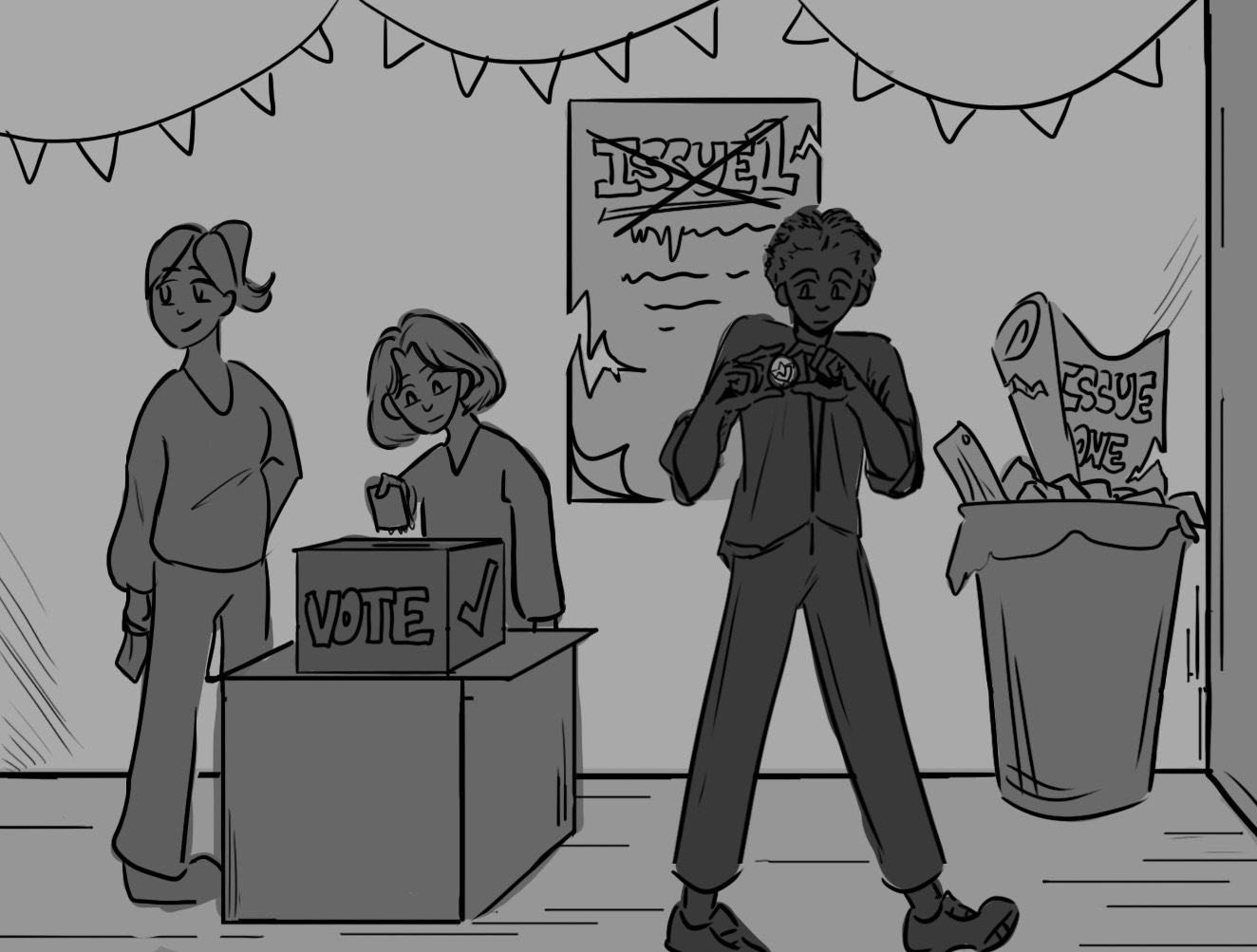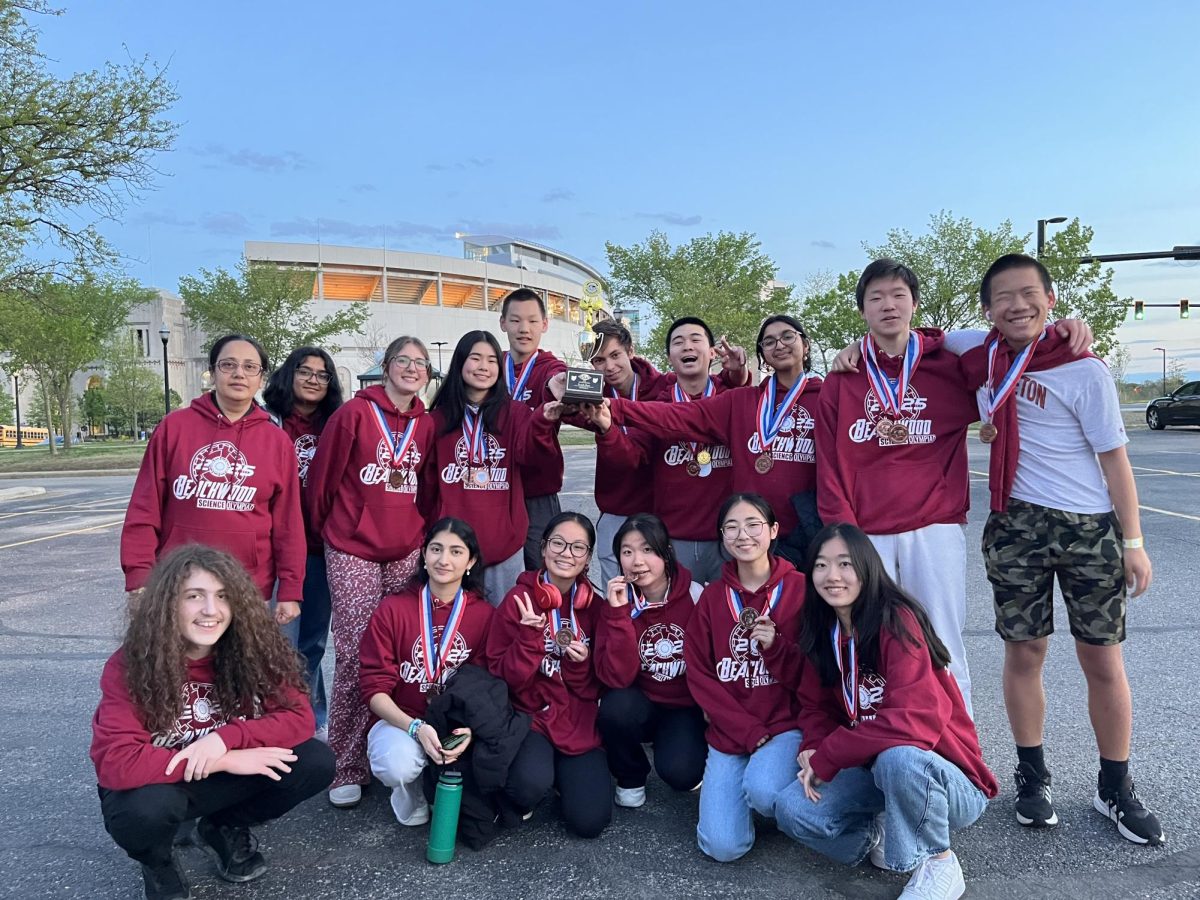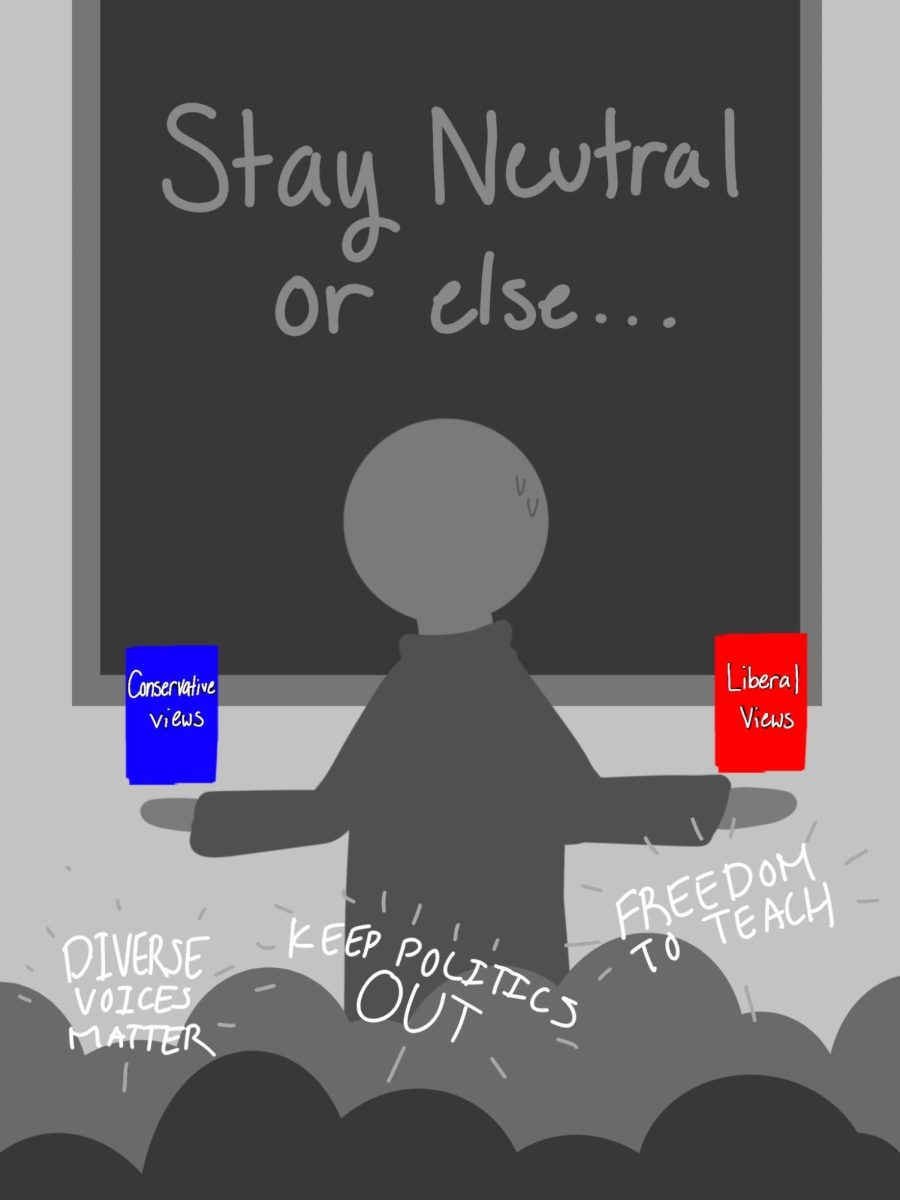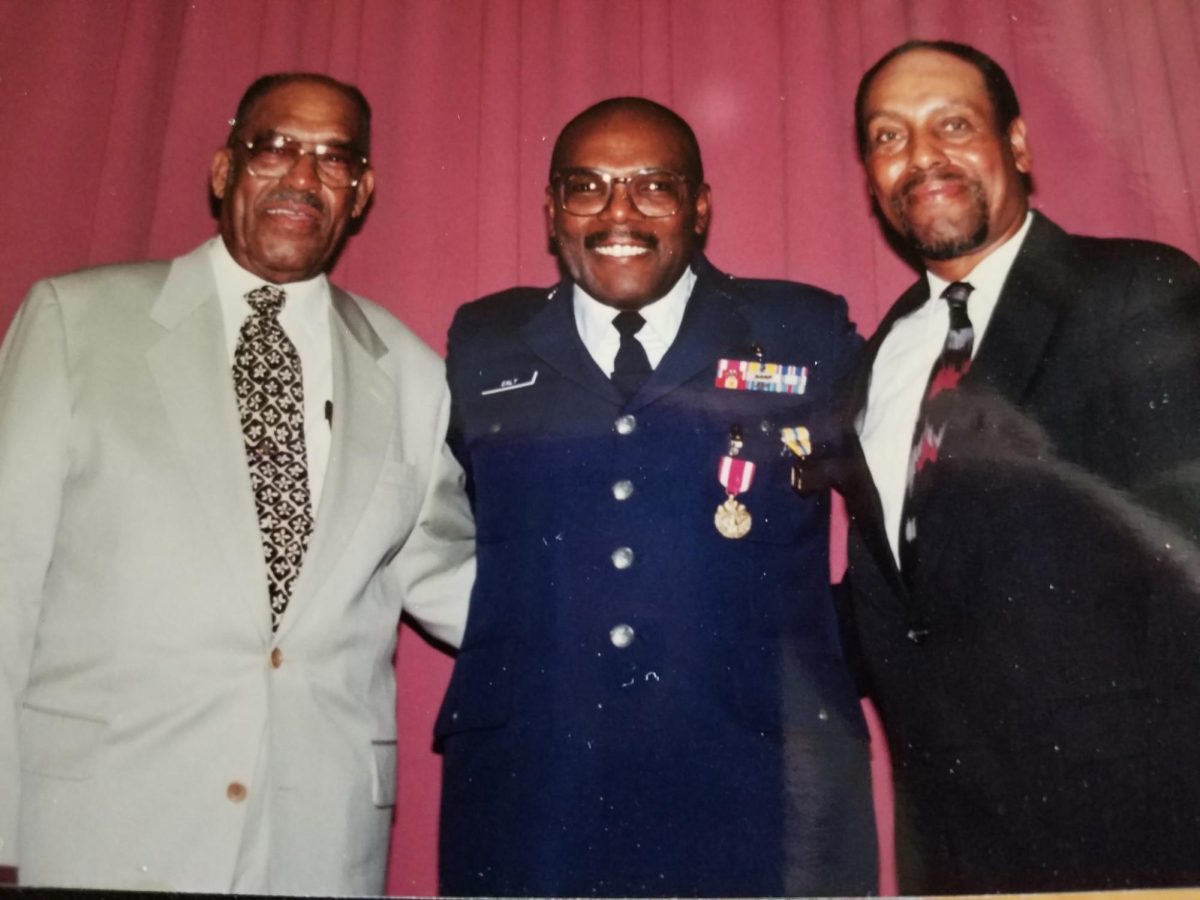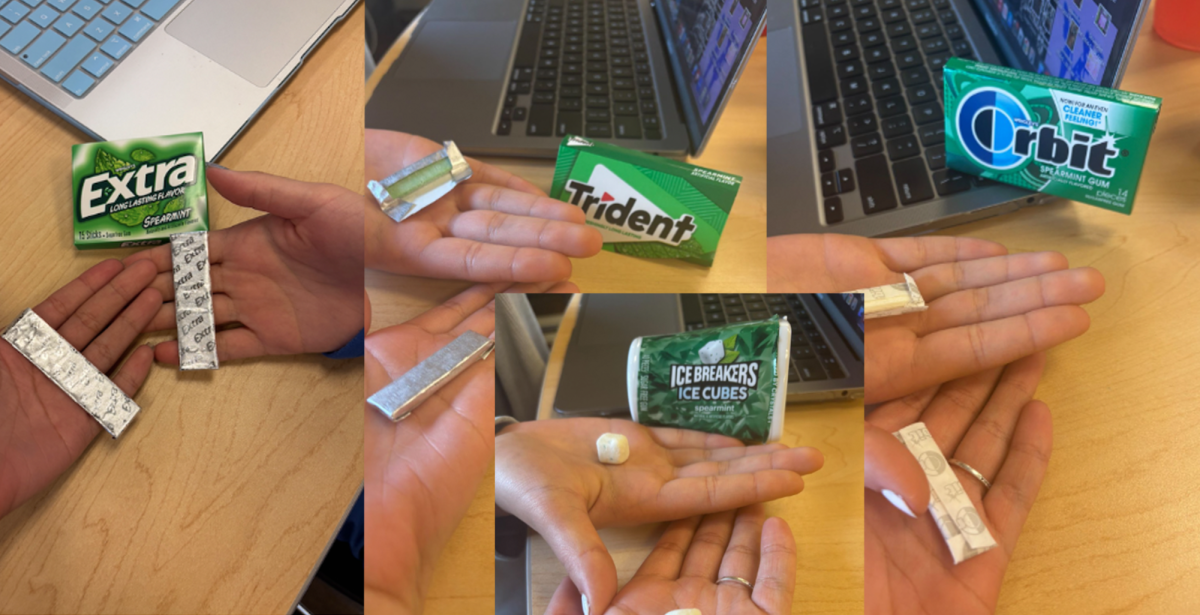Ohio voters rejected Issue 1 on Aug. 8, a proposed constitutional amendment which would have made it more difficult to pass a citizen-initiated amendment.
Abortion has recently been a heavily contested issue in Ohio, as The U.S. Supreme Court voted to overturn the 1973 ruling Roe v. Wade in the case Dobbs v. Jackson Women’s Health Center on June 24, 2022.
Following the Dobbs decision, Ohio reinstated a six-week abortion ban, originally passed in 2019, which had been successfully blocked by a lawsuit filed by the ACLU and Planned Parenthood.
However, an amendment titled The Right to Reproductive Freedom with Protections for Health and Safety, (which will also be called Issue 1) is set to appear on the ballot this upcoming Election Day, Nov. 7.
“Every individual has a right to make and carry out one’s own reproductive decisions, including but not limited to decisions on contraception, fertility treatment, continuing one’s own pregnancy, miscarriage care and abortion,” according to the initiative petition. It also asserts that the state cannot interfere with an individual’s rights to reproductive freedom.
Margie Christie, the Executive Director of Dayton Right to Life, emphasized the comprehensiveness of the proposed amendment.
“They also want to nullify parental rights, and they call it reproductive freedom, so they want to include other things, like transgender surgeries,” she added. “If it was just an abortion bill, it would be a bill on abortion, but it’s on reproductive freedom, so that encompasses a lot more.”
Pro-life organizations such as Protect Women Ohio (PWO) have asserted this claim in various television ad features.
“[The Reproductive Freedom amendment would] abolish parental notification and consent requirements that protect minor girls from undergoing an abortion, or even sex-change surgery without her parents’ knowledge or involvement,” One PWO video advertisement argued.
However, analysts have found this claim to be false.
“There is no mention of transgender rights or parental rights in the amendment,” according to NBC News. “Furthermore, nonpartisan constitutional law experts say there is virtually no way the language could be legally interpreted to apply to most topics not specifically mentioned in the measure’s language — even when the “not limited to” phrase is considered.”
Moreover, The Ohio Ballot Board is currently under fire by the Ohioans United for Reproductive Rights because of an allegedly deceptive summary of the amendment that was written and approved by the Board.
“The summary changed the originally submitted ballot language, which used the terms “fetus” and “pregnant patient,” to “unborn child” and “pregnant woman,” respectively. Many reproductive rights supporters say that this new ballot language is deceptive and unlawful.
“When voters turn to Issue 1 on their ballots this fall, will they find ballot language that fully, accurately, and impartially describes the Amendment’s scope and effects? Or, conversely, will voters be confronted with language that obscures that scope and distorts those effects?” the lawsuit asks.
The proposed abortion amendment is set to appear on the ballot almost three months after the rejection of Issue 1, a measure that would have increased the number of votes needed to pass a citizen-initiated amendment to the state’s constitution.
Jen Miller, the Executive Director of the League of Women Voters of Ohio, explained the connection between reproductive rights and this summer’s effort to change the rules on ballot initiatives.
“If Issue 1 in the August special election would have passed, it would have required that any future ballot initiatives pass by 60%,” she wrote in an email. “Such a threshold would have made it harder for voters to pass any constitutional amendment, including the pro-choice initiative this fall.”
Secretary of State Frank LaRose also acknowledged that Issue 1 was aimed at reproductive freedom.
“This is 100% about keeping a radical pro-abortion amendment out of our constitution. The left wants to jam it in there this coming November,” he told supporters in May 2023.
According to a poll conducted by USA TODAY Network/Suffolk University, 58% of Ohio voters support an abortion rights amendment.
State Rep. Eliot Forhan (D-South Euclid) described the significance of the rejection of August’s Issue 1 in terms of the proposed reproductive rights amendment.
“Issue 1 is extremely important for the future of reproductive freedom in the state of Ohio,” he said. “Polling at the moment seems to suggest that approximately 60% of Ohioans support guaranteeing reproductive freedom in our state. That’s right around the minimum required affirmative vote that would have been necessary if Issue 1 [on the August ballot] had passed.”
“It’s so much more difficult than a simple majority, and it’s unnecessarily so,” he added. “A 60% majority is permitting a minority, 40% plus one, to block the will of way more than 50%.”
Forhan emphasized the overall significance of Issue 1 in terms of the future of Ohio.
“The fact that Ohio voters rejected Issue 1 [on the August ballot] is extremely important and a good result for our state, our democracy and for the future of reproductive freedom,” he said.
A Marijuana Legalization Initiative will also appear on the Ohio ballot this upcoming Election Day.
“The measure would allow adults 21 and over to buy and possess up to 2.5 ounces of cannabis and to grow plants at home,” according to AP News. “A 10% tax would be imposed on purchases, to be spent on administrative costs, addiction treatment programs, municipalities with dispensaries and social equity and jobs programs.”
The initiative, proposed by the Coalition to Regulate Marijuana Like Alcohol, was originally submitted with 222,198 signatures. 124,046 of these signatures had to be verified by Ohio counties’ boards of elections, but the initiative fell short of this. Under current Ohio law, the initiative had a cure period of ten days to collect additional signatures, which they did, gathering over 6,500.
However, if Issue 1 had been passed, supporters of the initiative wouldn’t have had the chance to submit more signatures.
In order to amend the Ohio Constitution through a citizen-led initiative, a simple majority has been the precedent for 111 years. Since 2000, only two citizen-proposed amendments have passed with less than a 60 percent vote. These include a 2006 amendment to raise the minimum wage from $5.15 to $6.85 an hour, which was approved by 57 percent of voters, and a 2009 amendment that legalized gambling at casinos in Cleveland, Columbus, Cincinnati and Toledo. This amendment was also approved by 57 percent of voters.
However, State Issue 1 would not have allowed the passage of these amendments.
“Any proposed amendment to the State Constitution [must] receive the approval of at least 60 percent of eligible voters voting on the proposed amendment,” according to the issue report by Ohio Secretary of State Frank LaRose.
If passed, the Issue would have also required that citizens collect signatures from 5 percent of voters in all 88 counties of the state to amend the constitution, as opposed to the previous 44. Furthermore, the Issue would have prohibited additional signatures from being added on an initiative petition to amend the Constitution if the original submission did not have enough signatures, removing the current cure period of ten days.
Miller described the importance of citizen-proposed amendments.
“Through Ohio Constitutional ballot initiatives, Ohioans have approved pensions for war veterans, raised the minimum wage, provided housing assistance, funded conservation and recreation areas, integrated the Ohio National Guard with both people of color and women, and invested in infrastructure improvements and building new schools,” she wrote in an email. “Many of those policies didn’t pass by 60%, so if it would have passed, it would have made it much harder for voters to make positive change through ballot initiatives.”
BHS junior Shreya Chellu is relieved that voters rejected Issue 1.
“It would be a blow to democracy,” she said. “The August election wasn’t meant to be partisan. It was about whether or not the citizens’ voice should be restricted. In a polarized state like Ohio, where there’s almost an even split of opinion, every vote does count.”
There are many ways that students and youth can get involved to assure that their voices are heard, the main way undoubtedly being to vote, which Rep. Forhan stressed.
“In the state of Ohio, we have a system that requires registration no later than 30 days before the election in which you want to vote. So, make sure to [register] in advance,” he said. “Also, once you’re registered, please vote in every election.”
Forhan also described other ways to stay active in the voting process, such as connecting with local Democratic or Republican parties and affiliate groups to find volunteer opportunities, such as canvassing, more commonly known as door-knocking.
“It’s the building block for a political campaign, talking to people in person… I’ve done it myself,” he said. “I knocked on thousands of doors in support when I ran for Representative.”
“It also includes campaigns on issues, so if you feel strongly about reproductive freedom, you could connect with the local Democratic Party or with affiliate groups, like Planned Parenthood or Pro-Choice Ohio,” he said.
Maddie Haughton, the Lead Organizer of the Northeast Ohio Voter Advocates, also described ways that students can participate in the democratic process.
“We’re always looking for volunteers to do voter registration, but other ways that people can get involved in the process is to keep up to date on local laws,” she said. “Make sure you’re educated about the Voter ID changes, which affects in-person voting.”
The Northeast Ohio Voter Advocates also do a lot of direct voter registration, including registering voters at the Cuyahoga County Public Jail, public buildings and health clinics. Their work also includes general voter information across Cuyahoga County.
“Learning what the process looks like and spreading that education to your circle is definitely a good way to participate, and just trying to get everyone aware of their rights and what’s going on,” Haughton said.


